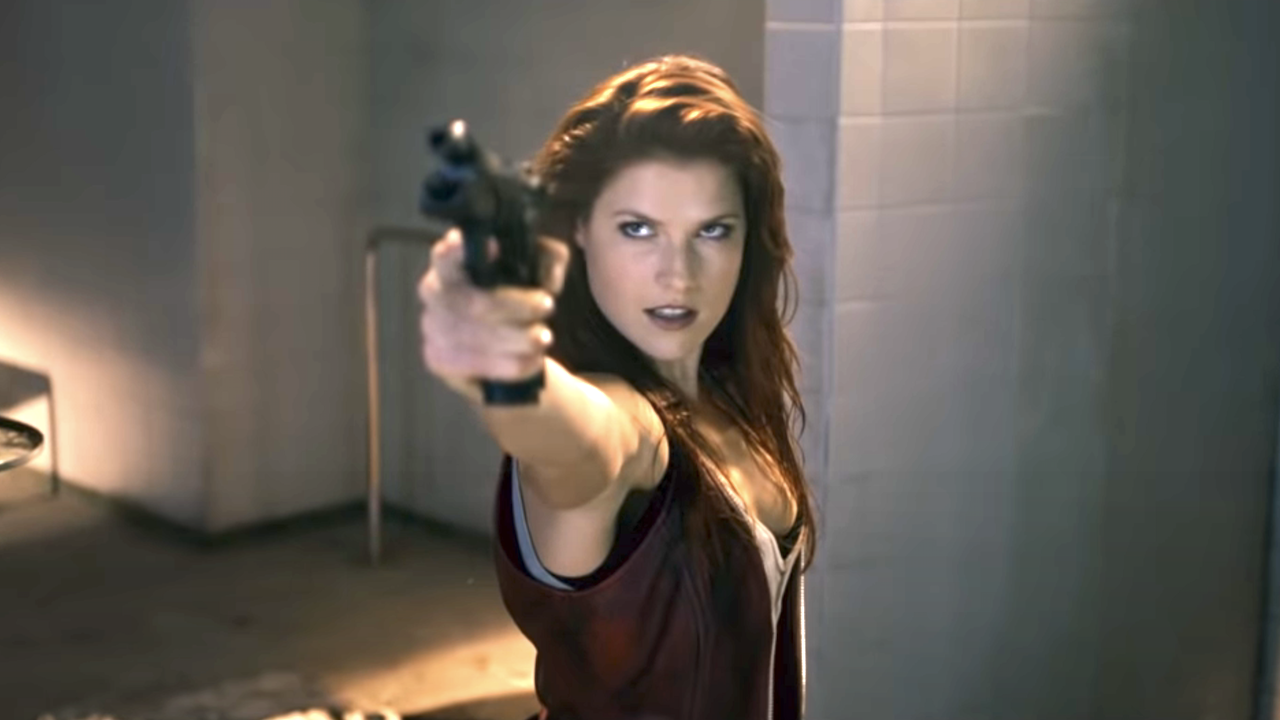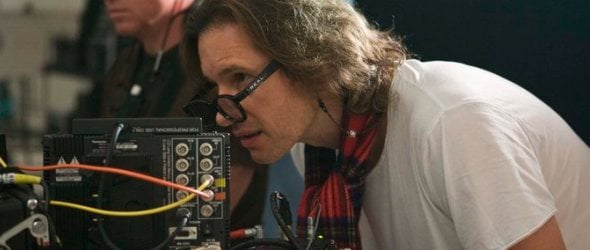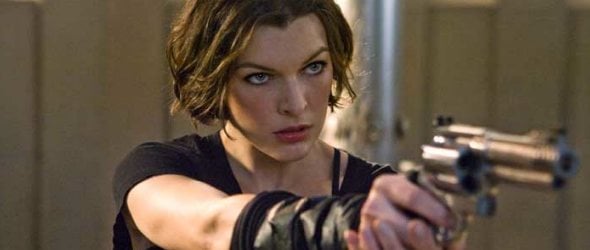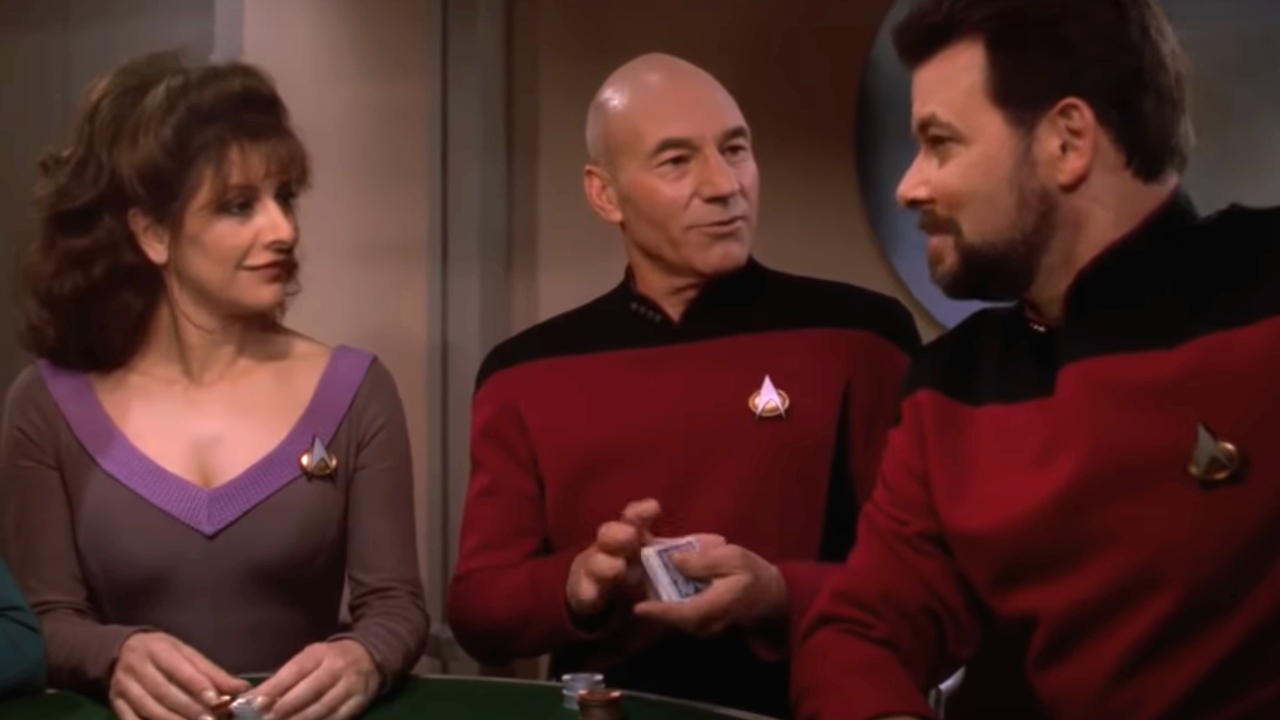Interview: Paul W.S. Anderson Brings Resident Evil: Afterlife To The 3D Cutting Edge

Though he wound up marrying leading lady Milla Jovovich, Paul W.S. Anderson let the Resident Evil franchise go on without him after directing the first film, as he moved on to Alien vs. Predator and Death Race and stuck around Resident Evil as a producer. But for Resident Evil: Afterlife he's back in the director's chair, and handling an even bigger challenge than zombies and an evil corporation: 3D.
Using some of the same cameras and crew that helped make Avatar a reality, Anderson and his cast-- with Wentworth Miller newly on board-- set about translating the world of Resident Evil into the third dimension. Anderson is now a total convert to the medium, and not just because he has the bragging rights of the releasing the few live-action movies of 2010 actually filmed in 3D, not post-converted. I caught up with Anderson at Comic Con, before I or anyone else at the roundtable had seen a frame of footage from the 3D film, so we had to rely on Anderson to explain what to expect, and how 3D was going to change the look of the world. It says a lot about Anderson's enthusiasm that even the first question, a joke about what his bullets are, turned into an explanation of what cool thing to expect. Check it all out below. Resident Evil opens September 10.
[Jokingly] What's your favorite bullet?
I'll tell you exactly what my favorite bullet is. In this movie, Milla collects quarters. It's like, why do you need money in a post-apocalyptic world. And what you discover is she's making shotgun shells, but instead of pellets in the shotguns it's a whole roll of quarters. When she shoots the sawed-off shotgun you have the great slow-motion shot where all these coins come out. And they kind of go heads-tails, heads-tails-- it's like that spinning thing just plows through the undead.

What were the challenges filming this movie in 3D?
I think if you work with any new technology you have to expect it's going to be a little problematic. You know, the cameras were a little twitchy. You'd get less footage every day, less setups. The interesting thing about it is you just composed images in a different way. I moved the camera in a completely different way than I had on the movie I did beforehand [Death Race]. I went for more of a classical approach to filmmaking, lots of dolly and track and cranes, slightly slower, more choreographed fight moves. Because it looked better in 3D, and allowed you to experience the space a little more. It altered the way I shot the movie, completely. After 20 years of filmmaking I felt like I was on my first movie all over again.
I think that's what makes a mockery of a lot of those 3D conversions, where they're shot in 2D and converted to 3D. Having made a real 3D movie, you realize that right from the production design you're designing sets that complement the 3D. You're designing interactive elements, like rain or smoke--all this particulate matter in the air enhances the 3D. But if you're shooting in 2D, you don't know about that. I'm convinced 3D is the future of cinema. I think it's a paradigm shift in terms of cinema, and those things don't happen very often, The introduction of sound, the introduction of color photography, and now 3D. It happens once every 40 or 50 years, so it's very exciting to be a filmmaker working while one of them is happening, and also to really be on the cutting edge. We really will be the first live-action 3D movie of the year. There hasn't been one this year yet, it's all been conversions. When people see what real 3D looks like, they'll go "oh, that's why I spend an extra 5 bucks on a cinema ticket. That's worth it."
Your Daily Blend of Entertainment News
You have a lot of characters from the games in your films, but you're taking them in different directions. Do you have a lot of input from Capcom or anyone telling you what you can or cannot do.
I always run the stories by them, they read the scripts, they give their comments. I would never want to, like, kill a character they want to use in the next game. So absolutely. We're very respectful of the world of the video game. And though we're telling new stories and introducing different characters, I've always felt like this is what the video game does itself. One of the reason Resident Evil is a successful franchise is that they've constantly evolved. And that's what we do in the movies. We use characters from the world, but every episode of the movie franchise has new characters, new shorelines.
When new games come out and you see new characters, do you get excited and start writing them into your films?
Well a good example of that is the dogs. I love the dogs, ever since I played Resident Evil 2 and the dog crashed through the window, it just terrified me. But I have to say after three movies of them, there's a limit to what you can do with dogs. They don't take direction well, they get tired-- they're the real divas on set. And then I played Resident Evil 5, and it's like "Eh, dogs again" and then their heads split open. It's freaky shit !I love this. That's a perfect example of how the game reinfused me to use those characters.

Is there going to be a lot of digital effects of things flying out at the screen at us, like in Final Destination 3D for example?
What happened in Final Destination, I don't know if you noticed, but the movie was in post-production a long long time. I think they changed a lot of the deaths, so a lot of those things were last-minute additions. Our process, everything we shot is in the movie, and it's all being designed. We haven't changed anything. It's been a year of making these things happen exactly as we had pictured them. We have stuff coming out a the screen, but it's not going to look bad. It's not slapdash. Will stuff come out of the screen? Absolutely. Will it look as bad as that tire in Final Destination 3D? Don't' worry, it's not going to look like that.
Zombies are front and center in pop culture right now. What makes them such an appealing foe?
For me it's a multitude of things. In the modern world there's a real fear of loss of individuality, and I think the undead speak to that. And the idea of the dead coming back to life, and this unstoppable foe coming after you slowly, I think it's a real primal fear, like a fear of claustrophobia or a fear or heights or a fear of water. I've had that recurring dream since I was a child. I think that's one of the things that horror and action films provide for us. They provide those surges of adrenaline, surges of terror, that when you live in a Western society you don't really get anymore.
Staff Writer at CinemaBlend

